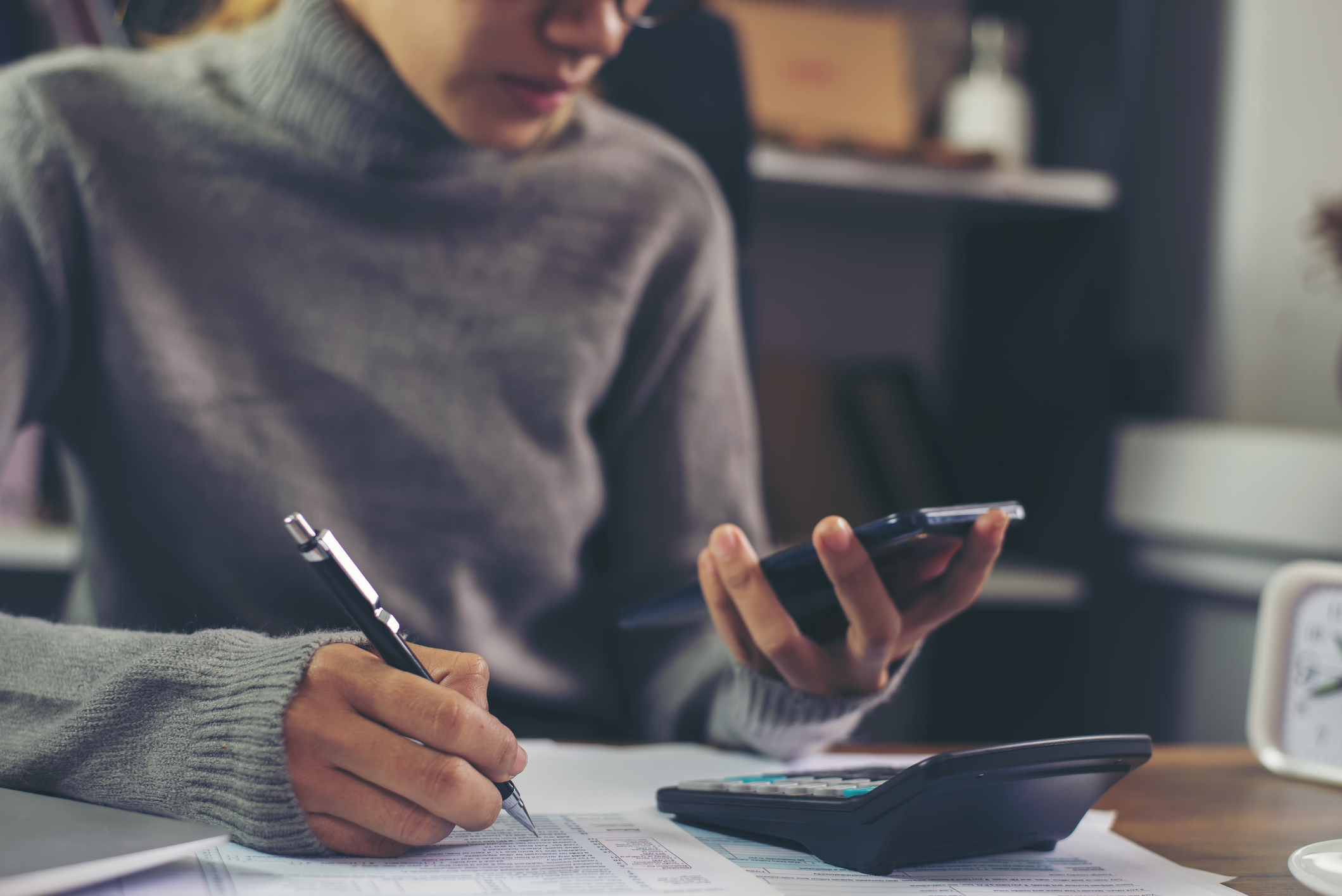The main challenge with calculating your GST refund or payment is keeping an accurate record of all the GST transactions related to your taxable activity or business. The calculations themselves are quite straightforward. You just need to know what’s claimable and how to deal with things like zero-rated supplies, credit adjustments and debit adjustments if you have them. Here’s a quick guide to get you started.
When to calculate your GST return
When you register for GST, you can choose how often you will file GST returns. Known as your taxable period or filing frequency, for most people it can be either two or six months. However, if your annual sales are $500,000 or more, you can’t choose a six month filing period. Anyone with annual sales more than $24 million has to file monthly.
Whichever one you choose, it pays to keep a running total as you go. That way you can keep an eye on how much your next payment or refund is likely to be. It also helps you set money aside, so it’s ready and waiting when your payment is due.
How to change your GST filing frequency
You can change your filing frequency through Inland Revenue’s online service, which is called myIR. As their business grows, some people find the six-month period means too much work each time. The answer is to spread it out by switching to a two-month filing frequency.
What are the GST dates?
Taxable periods for GST are normally aligned with your end-of-year tax date, which is typically 31 March. So two-monthly taxable periods normally end on 31 May, 31 July, 30 September, 30 November, 31 January, and 31 March.
GST payments are due on the same day you file your GST return with Inland Revenue. With two exceptions, this happens on the 28th of the month after the end of each taxable period. For example, GST for the taxable period ending 31 July is due on 28 August. That gives you 28 days to complete your calculations and file your return.
The two exceptions are for the taxable periods ending:
- 31 March, which is due on 7 May
- 30 November, which is due on 15 January
If you’re late filing a return, or making a payment, or you make an incorrect return, Inland Revenue may charge a penalty. If you won’t be able to pay your GST or you realise you have made a mistake, Inland Revenue recommends you get in touch to let them know and discuss your options.
How to calculate your GST refund or payment
Calculating your regular GST return for Inland Revenue uses this simple formula.
GST refund/payment = GST collected from sales or income – GST paid in business expenses
- A negative answer means you get a refund from Inland Revenue
- A positive answer means you pay that amount to Inland Revenue
How you record and report the GST you collect and pay, will depend on your accounting basis.
What is a GST accounting basis?
When you register for GST with Inland Revenue, you can choose one of three ways to record the GST you collect and pay. Here’s a short description of each one:
- Payment basis: This uses the GST you’ve actually collected and paid in each taxable period, so it can be run from a simple cash book or bank account. You can choose this method if your annual sales total doesn’t exceed $2 million.
- Invoice basis: This uses the amounts on invoices you’ve sent to customers and invoices you’ve received from suppliers during the taxable period, even if they haven’t been paid. If you pay a deposit before receiving an invoice, you have to wait until the invoice arrives before claiming the GST. Anyone can choose the invoice basis and it’s the default method if you don’t select one.
- Hybrid basis: This uses the invoice basis for sales and the payments basis for expenses. Although anyone can choose the hybrid basis, its complexity means most people don’t.
GST adjustments for business or private use
You need to be careful when claiming GST for things that are also used privately or for non-taxable activities. You need to work out the percentage of business use and only claim that percentage of the GST on the expense. Common examples include:
- House expenses when you have a home office
- Phones (over $500 in value)
- Laptops
- Vehicles
If your business has assets that are also used privately, such as a holiday home you rent out and use yourself, then you may need to make a GST adjustment to repay a portion of the GST you claimed on expenses that relate to both business and private use. While you can claim all of the GST on solely business related expenses, such as advertising for guests, you can only claim a portion of mixed-use expenses like maintenance and council rates.
For more on GST adjustments for mixed-use assets, see the Inland Revenue website.
What are zero-rated supplies?
Some goods and services that are normally required to include GST can have a GST rate of 0% in certain circumstances. Here are two examples:
- When a New Zealand-based architect designs a building for an overseas client and the building will be constructed overseas
- An international flight and its connecting flight within New Zealand when bought at the same time from the same supplier
As there’s no GST involved in zero-rated supplies, there is no GST for the supplier to pay and none for the customer to claim.
For an extensive list of zero-rated supplies see the Inland Revenue website.
What are GST credit adjustments?
There are a couple of situations where you may need to claim back GST by making a credit adjustment, rather than through your business-related expenses.
- Bad debts you write off: If you use the invoice basis for accounting and paid GST to Inland Revenue based on an invoice that your customer didn’t pay, you can write the invoiced amount off as a bad debt and claim the GST back from Inland Revenue as a credit adjustment.
- GST paid to NZ Customs: If you pay GST to New Zealand Customs on imported goods, you should claim this back as a credit adjustment, rather than through your business expenses.
What are GST debit adjustments?
Sometimes you need to add an amount to the GST you pay to Inland Revenue for things other than regular sales and income. Here are a few examples.
- Entertainment expenses: Normally, you can only claim 50% of business-related entertainment expenses. If you’ve claimed the GST on the full amounts, then once a year you need to make an adjustment (pay Inland Revenue) for the 50% that was not claimable.
- Bad debts that end up being paid: If you use the invoice basis for GST accounting, you may have written off an invoice that wasn’t paid and claimed back the GST you had already paid on it. If the customer later pays all or some of what was owed, you’ll need to make a debit adjustment and pay Inland Revenue the GST on the amount you eventually received from the customer.
- When you’re paid in goods or services: In barter sales, where you are paid using something other than money, you must make a debit adjustment based on the current market value of what you received. To calculate the adjustment multiply the market value by 3 and divide the answer by 23. This is also how you calculate the GST component of a GST inclusive amount.
Related Resources
- GST Calculator
- Getting your head around GST in New Zealand: GST stands for ‘goods and services tax’. It’s a 15% tax that’s added onto the price of goods and services in New Zealand. GST will impact your business if you are ‘registered for GST’.
- How to register for GST in New Zealand: When you start working for yourself, your knowledge of goods and services tax (GST) needs to move up a level. As a consumer, you’ll be familiar with GST as ‘that extra bit of tax’ that gets added to almost anything you buy in New Zealand. But as a self-employed person, GST begins to mean a whole lot more.
- Your guide to PAYE in New Zealand: When you become an employer, there are legal employment obligations to understand and comply with. One of these is ‘pay as you earn’ or PAYE. It’s the New Zealand government’s way of collecting income tax and Accident Compensation Corporation (ACC) earners’ levies from employees.



